Solar eclipse of December 25, 1935
| Solar eclipse of December 25, 1935 | |
|---|---|
 Map | |
| Type of eclipse | |
| Nature | Annular |
| Gamma | -0.9228 |
| Magnitude | 0.9752 |
| Maximum eclipse | |
| Duration | 90 sec (1 m 30 s) |
| Coordinates | 83°30′S 9°24′E / 83.5°S 9.4°E |
| Max. width of band | 234 km (145 mi) |
| Times (UTC) | |
| Greatest eclipse | 17:59:52 |
| References | |
| Saros | 121 (56 of 71) |
| Catalog # (SE5000) | 9366 |
An annular solar eclipse occurred on December 25, 1935. A solar eclipse occurs when the Moon passes between Earth and the Sun, thereby totally or partly obscuring the image of the Sun for a viewer on Earth. An annular solar eclipse occurs when the Moon's apparent diameter is smaller than the Sun's, blocking most of the Sun's light and causing the Sun to look like an annulus (ring). An annular eclipse appears as a partial eclipse over a region of the Earth thousands of kilometres wide. This was the 5th solar eclipse in 1935, the maximum possible. The next time this will occur is 2206.
Related eclipses
Solar eclipses 1935-1938
This eclipse is a member of a semester series. An eclipse in a semester series of solar eclipses repeats approximately every 177 days and 4 hours (a semester) at alternating nodes of the Moon's orbit.[1]
| Solar eclipse series sets from 1935-1938 | ||||
|---|---|---|---|---|
| Ascending node | Descending node | |||
| 111 | January 5, 1935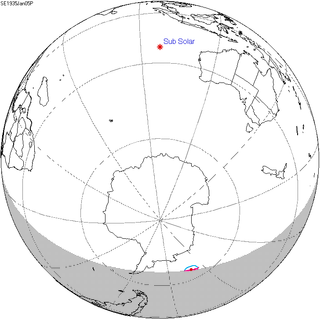 Partial |
116 | June 30, 1935 Partial | |
| 121 | December 25, 1935 Annular |
126 | June 19, 1936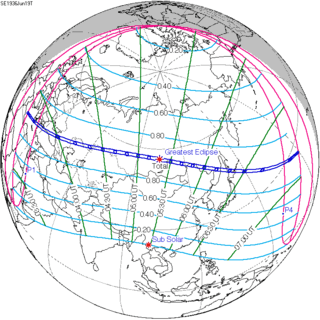 Total | |
| 131 | December 13, 1936 Annular |
136 | June 8, 1937 Total | |
| 141 | December 2, 1937 Annular |
146 | May 29, 1938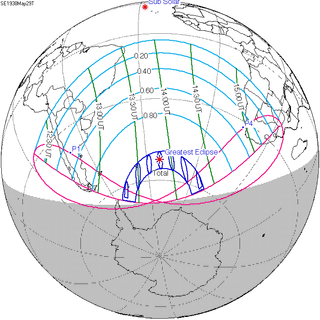 Total | |
| 151 | November 21, 1938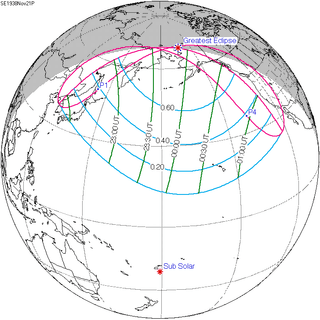 Partial | |||
Metonic series
The metonic series repeats eclipses every 19 years (6939.69 days), lasting about 5 cycles. Eclipses occur in nearly the same calendar date. In addition, the octon subseries repeats 1/5 of that or every 3.8 years (1387.94 days).
| 21 eclipse events between July 31, 1924 and July 31, 2000 | ||||
|---|---|---|---|---|
| July 31-Aug 1 | May 19-20 | March 7 | December 24-25 | October 12 |
| 115 | 117 | 119 | 121 | 123 |
 July 31, 1924 |
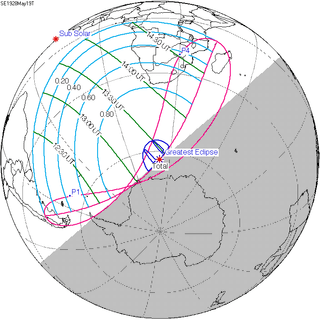 May 19, 1928 |
 March 7, 1932 |
 December 25, 1935 |
 October 12, 1939 |
| 125 | 127 | 129 | 131 | 133 |
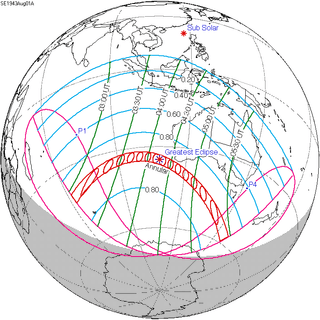 August 1, 1943 |
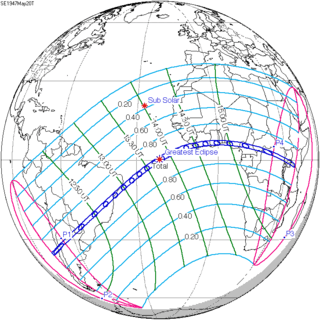 May 20, 1947 |
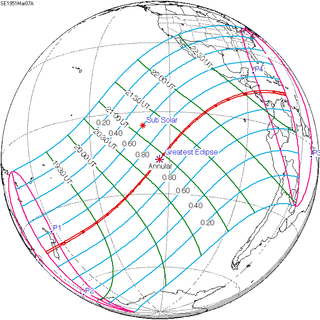 March 7, 1951 |
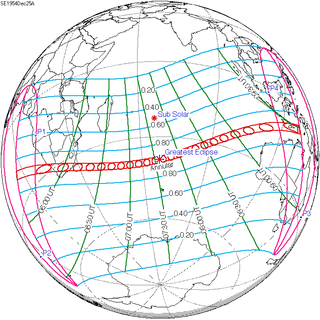 December 25, 1954 |
 October 12, 1958 |
| 135 | 137 | 139 | 141 | 143 |
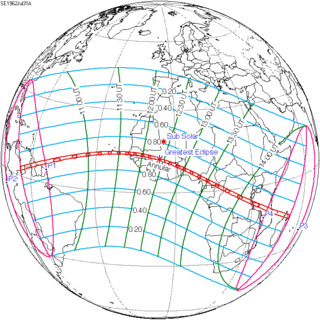 July 31, 1962 |
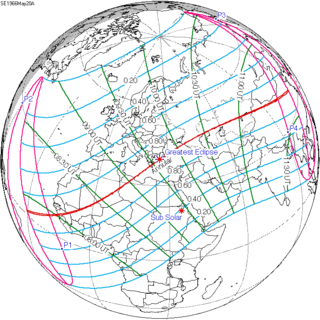 May 20, 1966 |
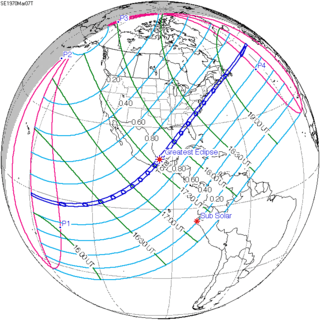 March 7, 1970 |
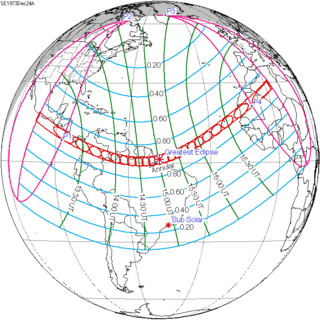 December 24, 1973 |
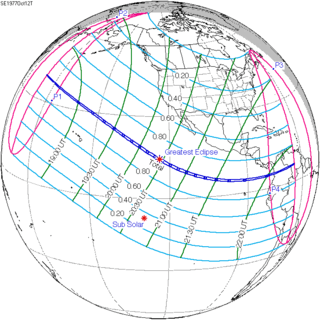 October 12, 1977 |
| 145 | 147 | 149 | 151 | 153 |
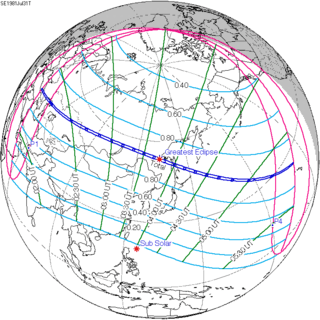 July 31, 1981 |
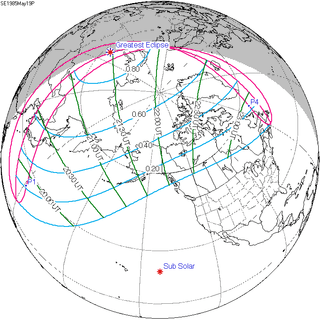 May 19, 1985 |
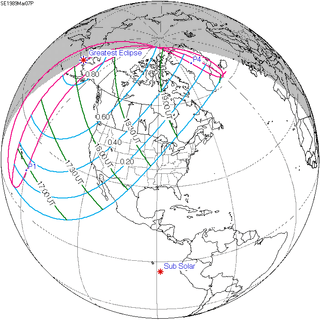 March 7, 1989 |
 December 24, 1992 |
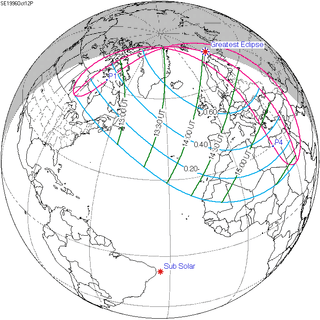 October 12, 1996 |
| 155 | ||||
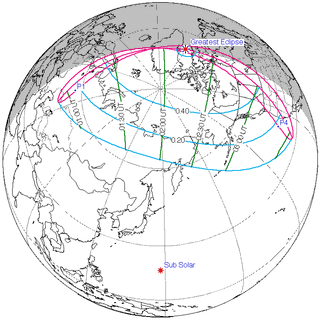 July 31, 2000 | ||||
Notes
- ↑ van Gent, R.H. "Solar- and Lunar-Eclipse Predictions from Antiquity to the Present". A Catalogue of Eclipse Cycles. Utrecht University. Retrieved 6 October 2018.
References
- Earth visibility chart and eclipse statistics Eclipse Predictions by Fred Espenak, NASA/GSFC
| Wikimedia Commons has media related to Solar eclipse of 1935 December 25. |
